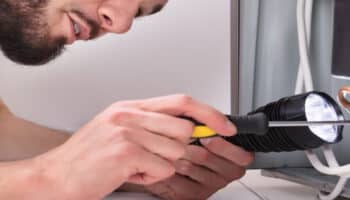We've independently reviewed this article to make sure it's as accurate as we can make it.
To find out more about our article creation and review process, check out our editorial guidelines.
Are you wondering where your fridge’s shut-off valve is?
You’re not alone! Finding the water shut-off valve can often be challenging, as its location can vary.
But don’t worry; I’m here to help.
To find your fridge’s water shut-off valve, look inside and behind the unit, near the main water supply and water heater, or under the kitchen sink. If you still can’t find it, look in your basement or behind the wall as a last resort.
Read on to learn where is the water shut-off valve for your refrigerator!
Why trust us? This article was written by Craig Anderson and Andy Fulenchek.
Craig has helped thousands of other homeowners repair their appliances since 2016.
Andy is one of our resident appliance repair experts with over a decade of experience. He currently runs his appliance repair company with a team of trusted technicians.
Where to Find the Water Shut-Off Valve in Your Fridge?
The location of the water shut-off valve for refrigerators will vary depending on the model. However, here are a few common places where you can find it:
#1 Look Inside Your Fridge’s Compartment
First, look for the water shut-off valve inside your fridge’s compartment.
You’re probably thinking that looking inside your fridge is too obvious, and you would have noticed the valve if it was there. But you wouldn’t believe how many people I’ve seen miss the water shut-off valve.
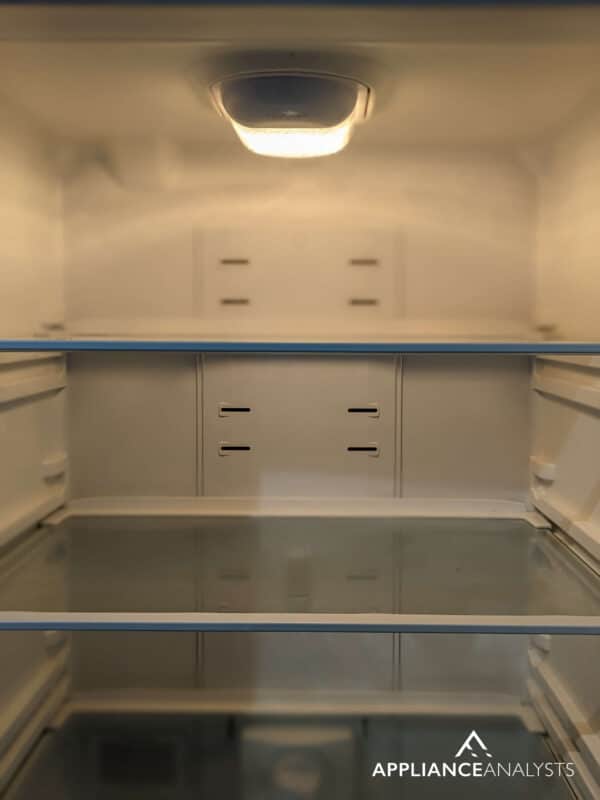
To check if the water shut-off valve is inside your fridge, you’ll have to clear the way to ensure unrestricted view of the compartment. Carefully remove your groceries and the fridge’s shelves and place them somewhere cool.
Once the compartment is empty, check every nook and cranny. If you’re lucky, it will be there, and you won’t have taken out your entire week’s produce for nothing.
#2 Look Behind the Fridge
I tend to find that the water shut-off valve (also known as the “angle valve”) is typically behind the fridge.
Having the water shut-off valve at the back of your fridge makes it very hard to notice and even harder to check once you’ve installed the unit. And if you’ve ever tried to move your refrigerator alone or even with someone’s help, you know what I’m talking about.
Now, having the shut-off valve placed behind the fridge is neither a terrible idea nor a disastrous design flaw. Sometimes it is very convenient to locate the shut-off valve there. However, it doesn’t mean it’s not also a challenge to control the free water flow.
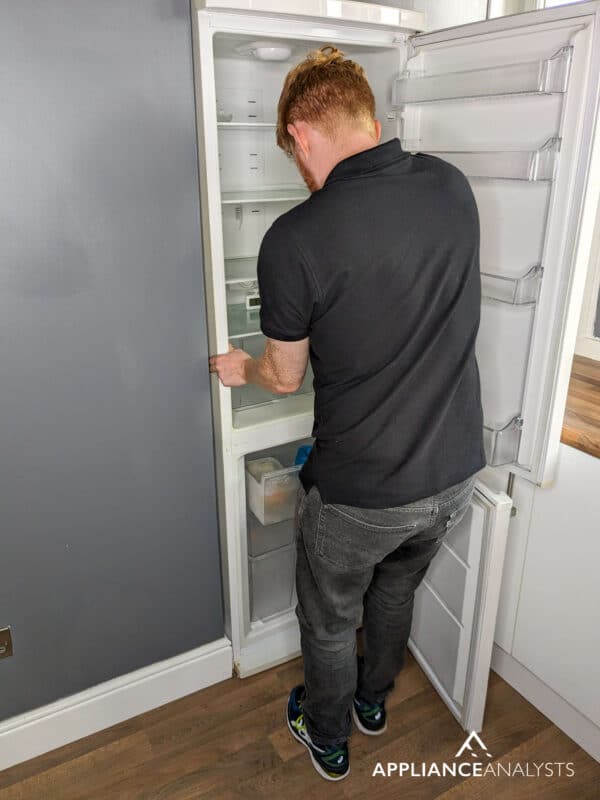
To locate the water shut-off valve, you’ll need to move your fridge out of the tight space it’s likely in. Here’s how to do it:
- Empty your fridge and disconnect it from the power supply.
- Carefully grab the refrigerator from the bottom and lift it ever so slightly. Just enough to get the frontal legs off the ground.
- Once there’s enough space to fit a towel underneath the frontal legs, start sliding it under the unit.
- After the towel reaches the legs at the back, start pulling the remainder towards you.
- With enough force, your fridge should start moving little by little.
- Once it has come out enough to allow you to lift the hind legs and slide more of the towel under them, do so, and keep pulling.
- Continue this process until you’re comfortable with the fridge’s position.
Once you have a clear view of the back of the appliance, look carefully and try to spot the valve. Assuming it’s not there, you’ll have to keep looking.
Modern fridges come with adjustable feet for leveling, but they can hinder easy movement of the appliance. So, for quicker access to the shut-off valve in emergencies, I recommend keeping the feet in the up position, allowing the refrigerator to roll out easily.
#3 Look Under the Sink
From what I’ve seen, the water shut-off valve in older homes is often not situated directly behind the fridge but rather under the kitchen sink.
To find it, just look under the sink. Alternatively, you can pull out your fridge and trace the water supply line connected to its back.
Luckily, if there’s a leak or a problem with the fridge’s water line, having the shut-off valve under the sink ensures that the water can be turned off quickly.
#4 Inspect the Water Heater
Another common place where you can find your fridge’s water shut-off valve is in the proximity of your water heater.
If your heater is near the kitchen, chances are there’s a shut-off valve, but if not, there are no guarantees.
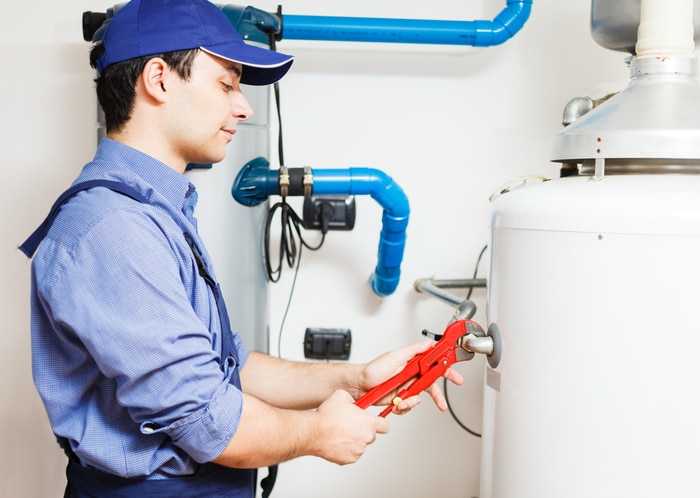
Placing an independent shut-off valve for your fridge within a close range of your kitchen is quite convenient, as it means you won’t have to go to the main water supply to stop the flow. So, if the person who installed your home’s piping thought of this, you’ll likely find the valve near the heater.
#5 Explore Your Basement
Yet another good place to find the refrigerator shut-off valve is in your basement.
If you have other appliances like radiant floor heaters installed in your home, you’ve probably noticed that contractors typically place circuit breakers, zone valves, and every other control terminal in basements because of convenience and simplicity, as it’s easier to have everything in one place.
Your fridge’s shut-off valve is probably not the exception, so going downstairs and taking a look can’t hurt.
#6 Check the Main Water Supply
In certain fridges, there’s a free flow of water into the unit, which can only be controlled via an independent source near the main water supply in your home.
So, if you can’t find the water shut-off valve, you’re probably looking in the wrong place. To rule out or confirm our theory, locate your home’s main water supply and inspect all the valves you see. You’ll have to experiment until you only shut off the valve controlling your fridge’s flow.
Once you have located it, I recommend using a permanent marker and tape to create a label you can stick on for future reference.
It’s worth mentioning that some older homes lack a water shut-off valve for the refrigerator. In such cases, the only alternative is to turn off the water at the street meter.
The street meter valve is typically located near your home’s boundary, often in a buried box or covered by a metal lid. Its main purpose is to control the water flow from the municipal water main into your home. Keep in mind that you’ll probably need a dedicated tool, such as large pliers, to access the street meter valve.
Tip: It’s a good practice to annually ensure the street meter box is free of obstructions for easy and quick access in case of emergencies.
#7 Check Behind the Wall
If none of the locations above helped you find your fridge’s water shut-off valve, it’s time to look behind the wall in its proximity.
I know that behind the wall is not the most convenient place to put the valve, but sometimes contractors and house builders have to think on their feet.
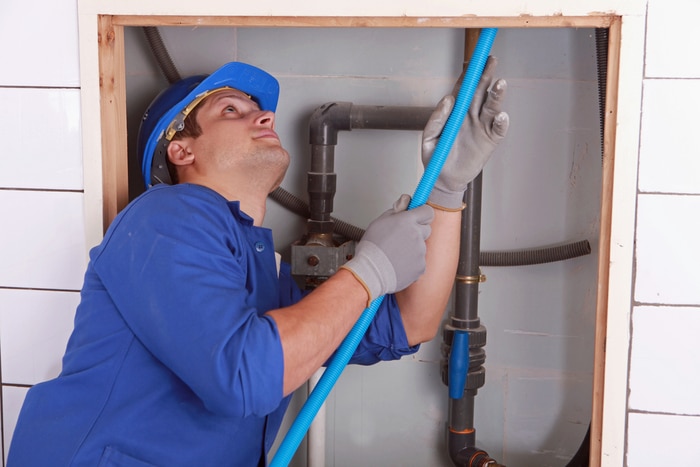
Unless you’re extremely experienced in plumbing and construction, I’d recommend calling a plumber to help you check for the fridge shut-off valve, as they’re very skilled at avoiding important pipes and other elements as they go through a wall.
I strongly recommend trying all the other solutions on this list first. Otherwise, you can unnecessarily open a hole in your home for no good reason.
For those without a shut-off valve, a saddle valve can be installed as an intermediate solution.
While professionally installed valves are ideal, a saddle valve provides a practical workaround and can be self-installed for under $30 from a hardware store
Your Guide to Finding Your Fridge’s Water Shut-Off Valve
Hopefully, now you know where the water shut-off valve for your refrigerator is.
Remember, there are some common spots where manufacturers place the valves on their products. You’ll often find your shut-off valve inside the fridge’s compartment, behind the unit, under the kitchen sink, or near your main water supply.
Thank you very much for sticking with me all the way to the end. If this article piqued your interest and answered your most burning questions, you’ll be happy to know that there’s much more content to keep learning from below.
I wish you the best of luck.
— Craig.






